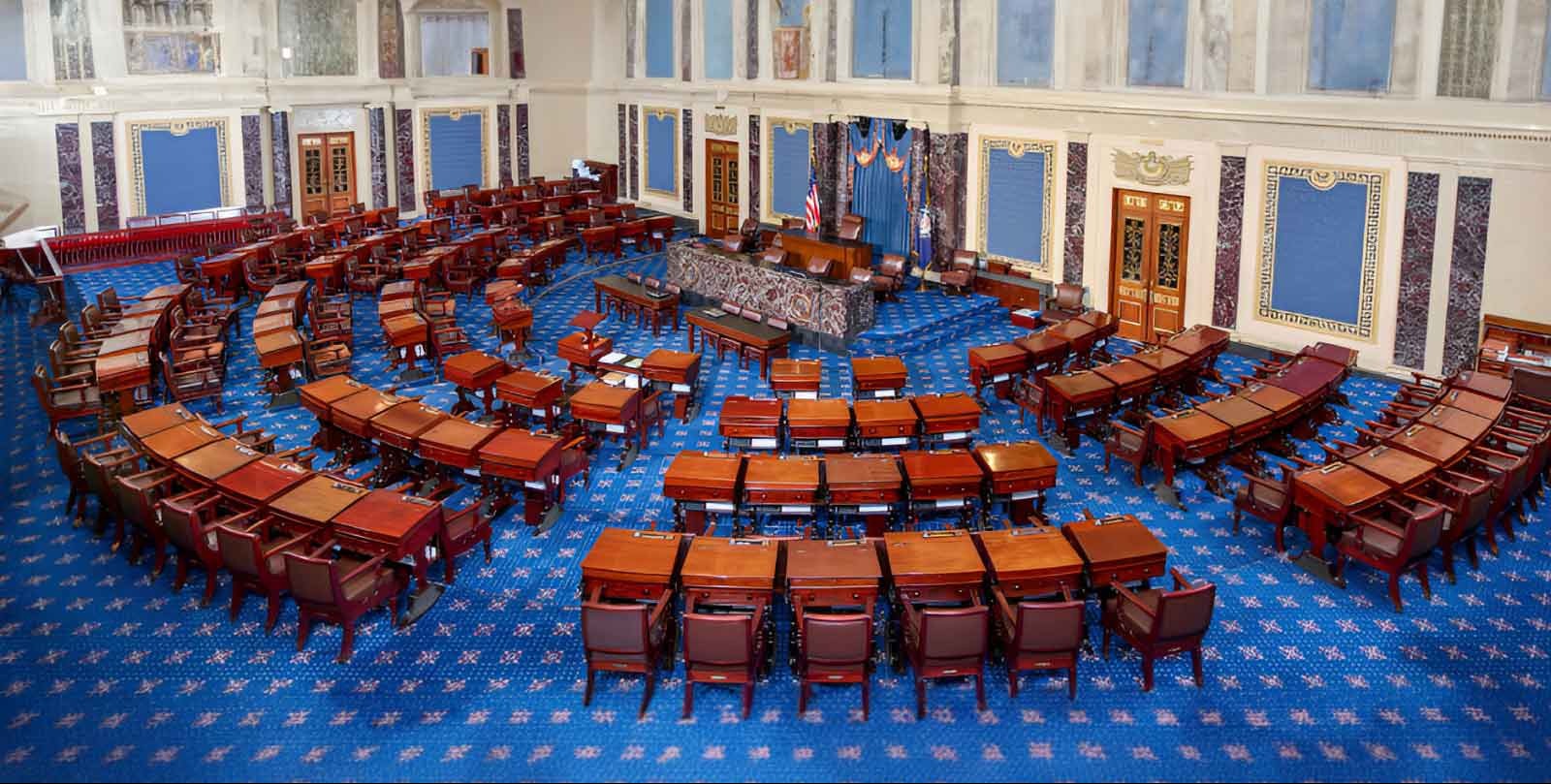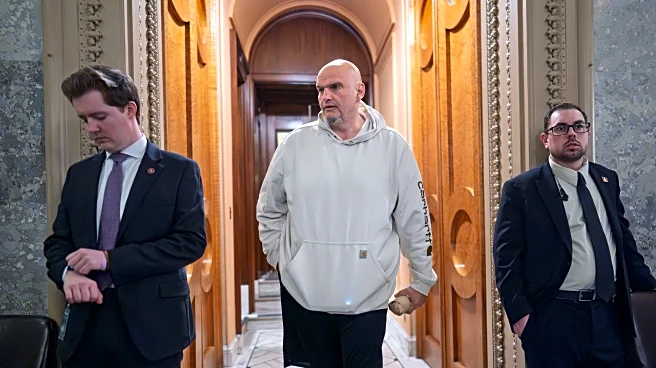What's Happening?
President Donald Trump has signed legislation to conclude the longest government shutdown in U.S. history, which lasted 43 days. This shutdown had significant repercussions, including halting food aid
to millions, canceling thousands of flights, and leaving federal workers unpaid for over a month. With the signing of the bill, federal operations are set to resume, and workers are expected to return to their jobs. However, it may take days or weeks for the federal bureaucracy to fully recover from the backlog created during the shutdown. The shutdown had a notable impact on the U.S. economy, with the Congressional Budget Office estimating a reduction in GDP growth by 1.5 percentage points for the current quarter. The House passed the interim funding bill with a vote of 222 to 209, although Democrats largely opposed it due to the absence of provisions for Affordable Care Act subsidies.
Why It's Important?
The end of the shutdown is crucial for restoring normalcy in federal operations and mitigating economic disruptions. The shutdown's resolution allows for the resumption of essential services and the release of delayed economic data, which is vital for market stability. The decision also highlights the political dynamics in Congress, where public pressure led to a resolution despite initial partisan standoffs. The shutdown's impact on low-income Americans, particularly those reliant on food assistance, underscores the broader societal implications of government closures. The resolution may influence future political negotiations and strategies, especially with upcoming elections.
What's Next?
The interim funding package extends government operations until January 30, setting the stage for potential future negotiations and conflicts. The bill includes provisions to prevent federal layoffs until the end of January, but the absence of a long-term solution means another shutdown could occur if a consensus is not reached. The political landscape may shift as parties prepare for the 2026 midterm elections, with health care funding likely to remain a contentious issue. Stakeholders, including federal employees and beneficiaries of government programs, will be closely monitoring developments to ensure stability and continuity of services.












